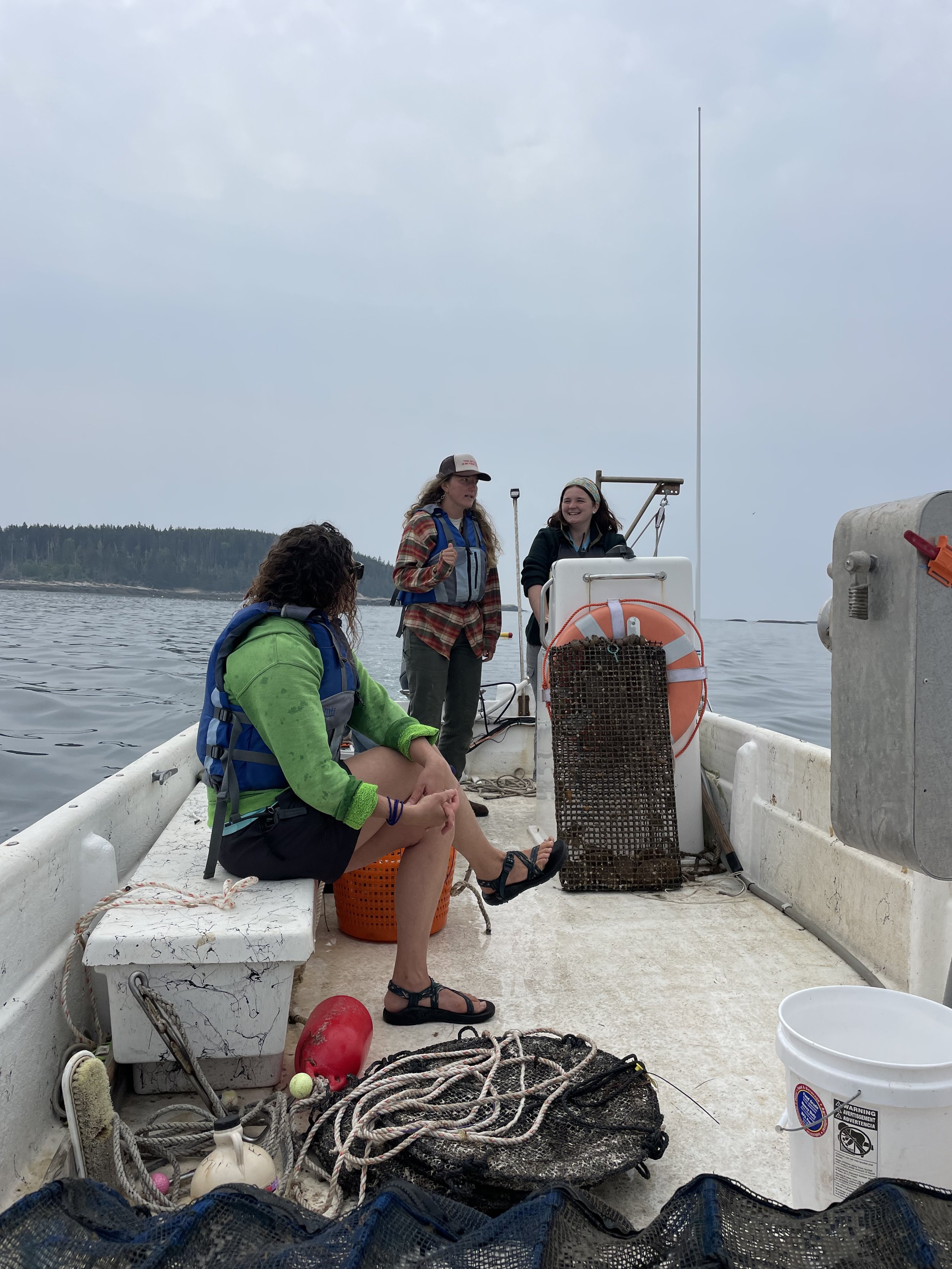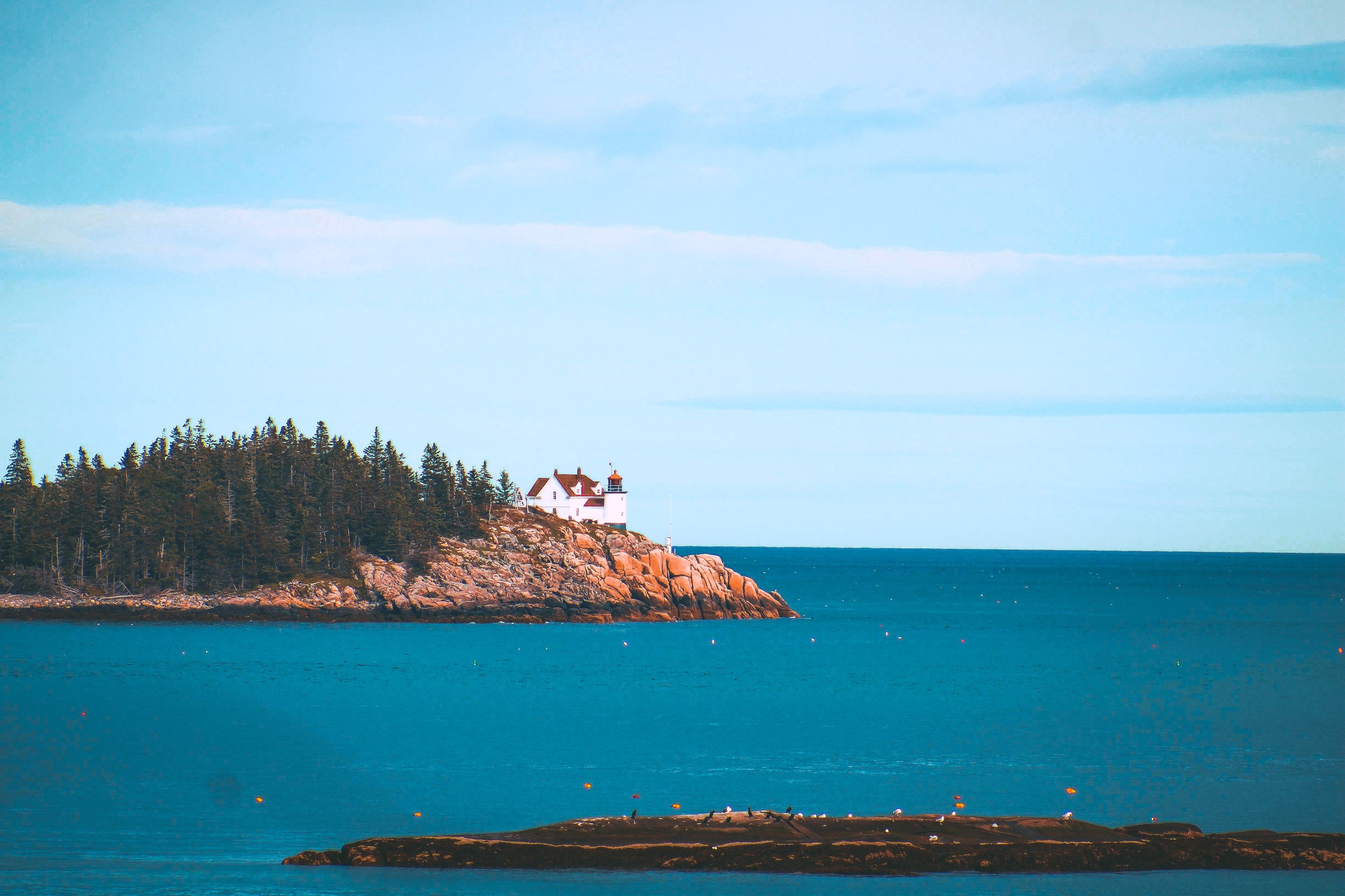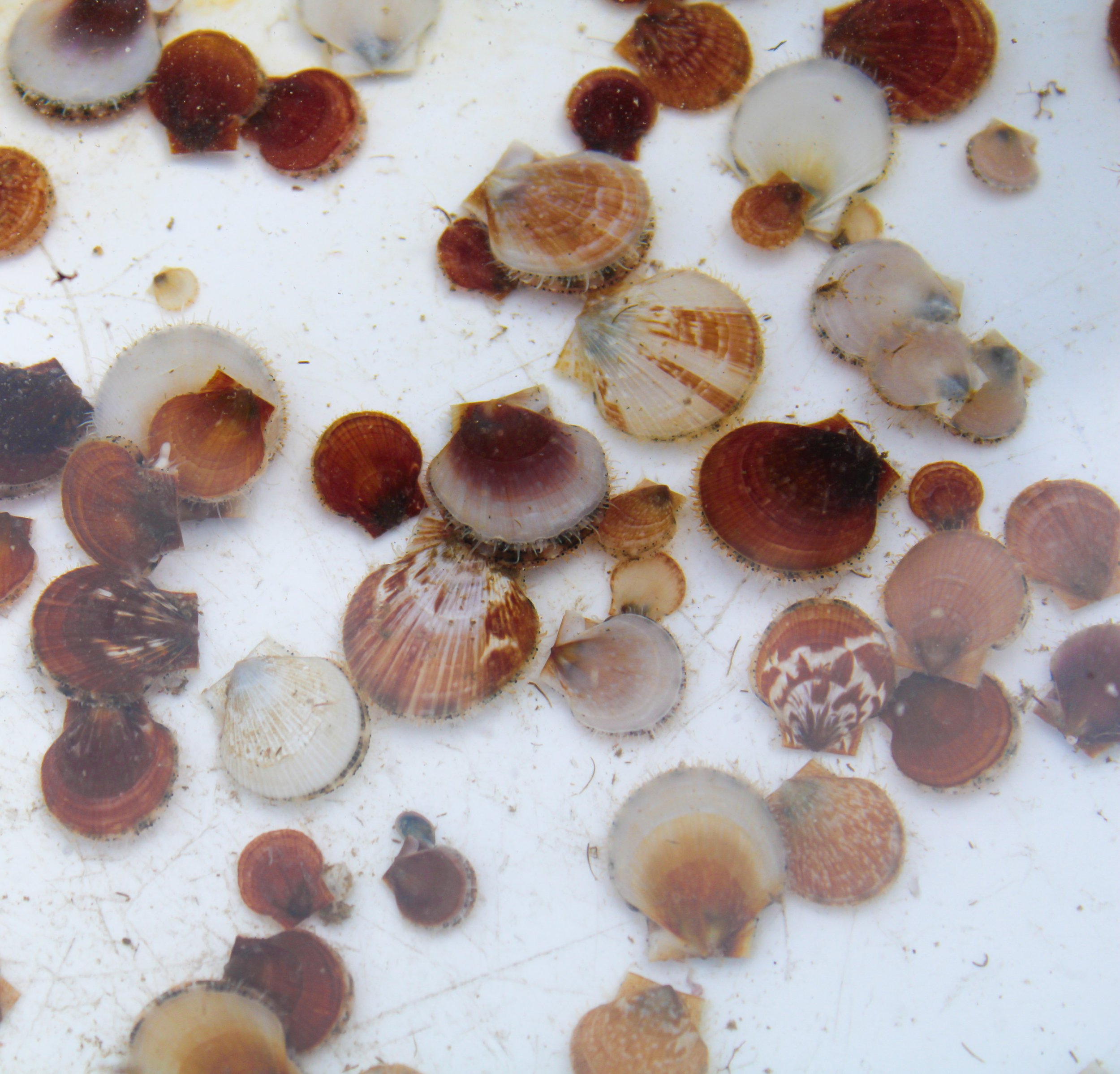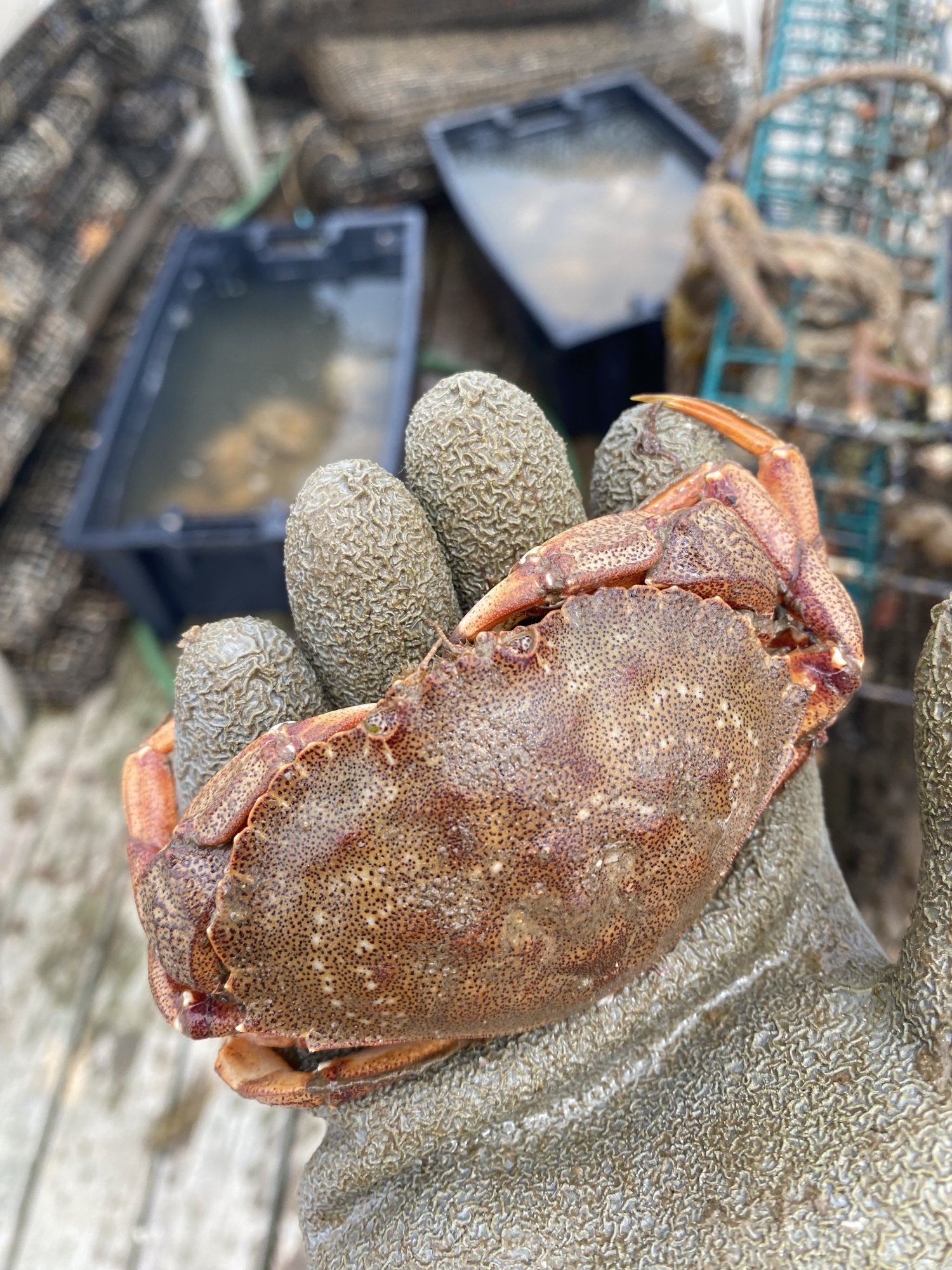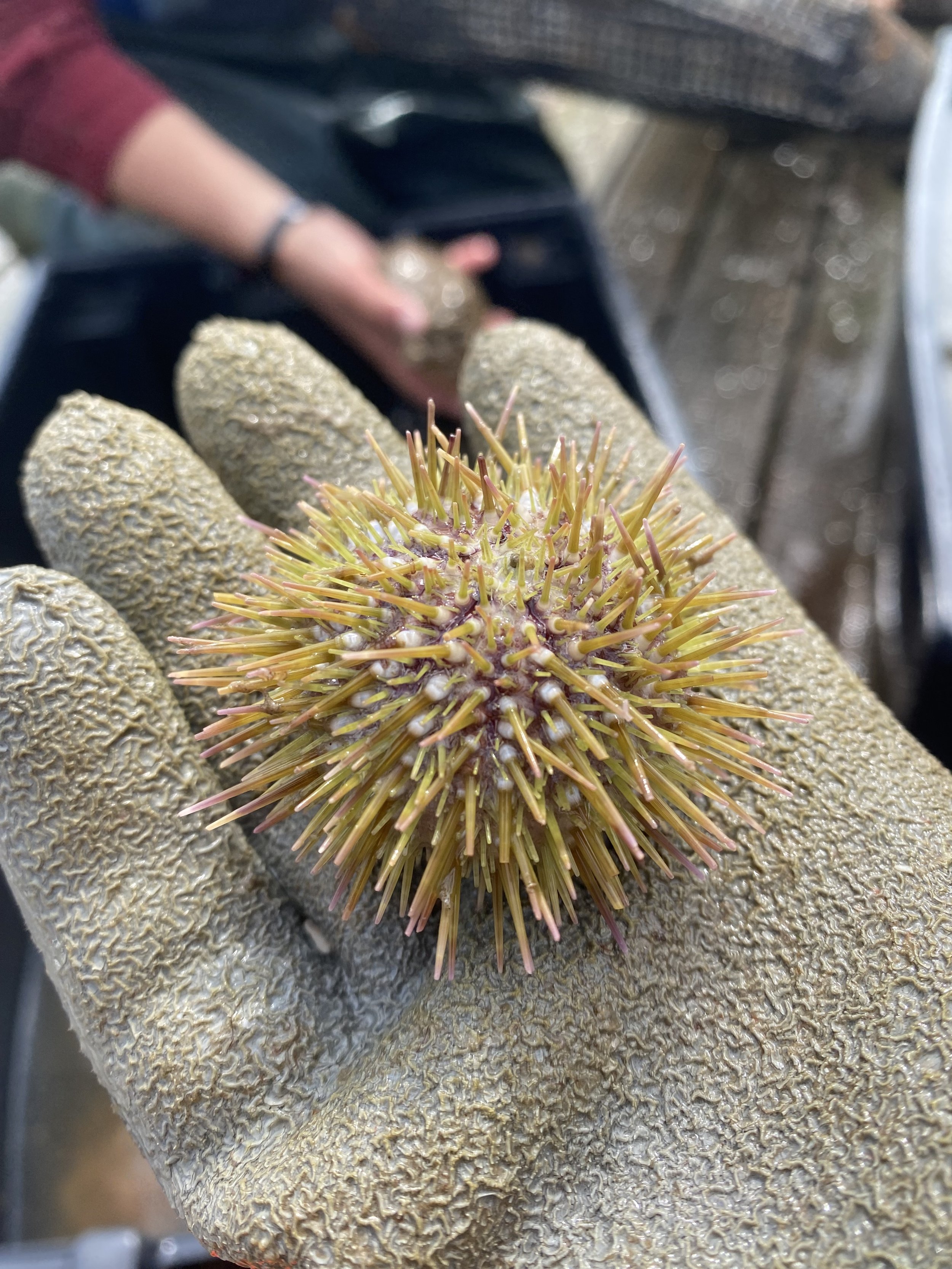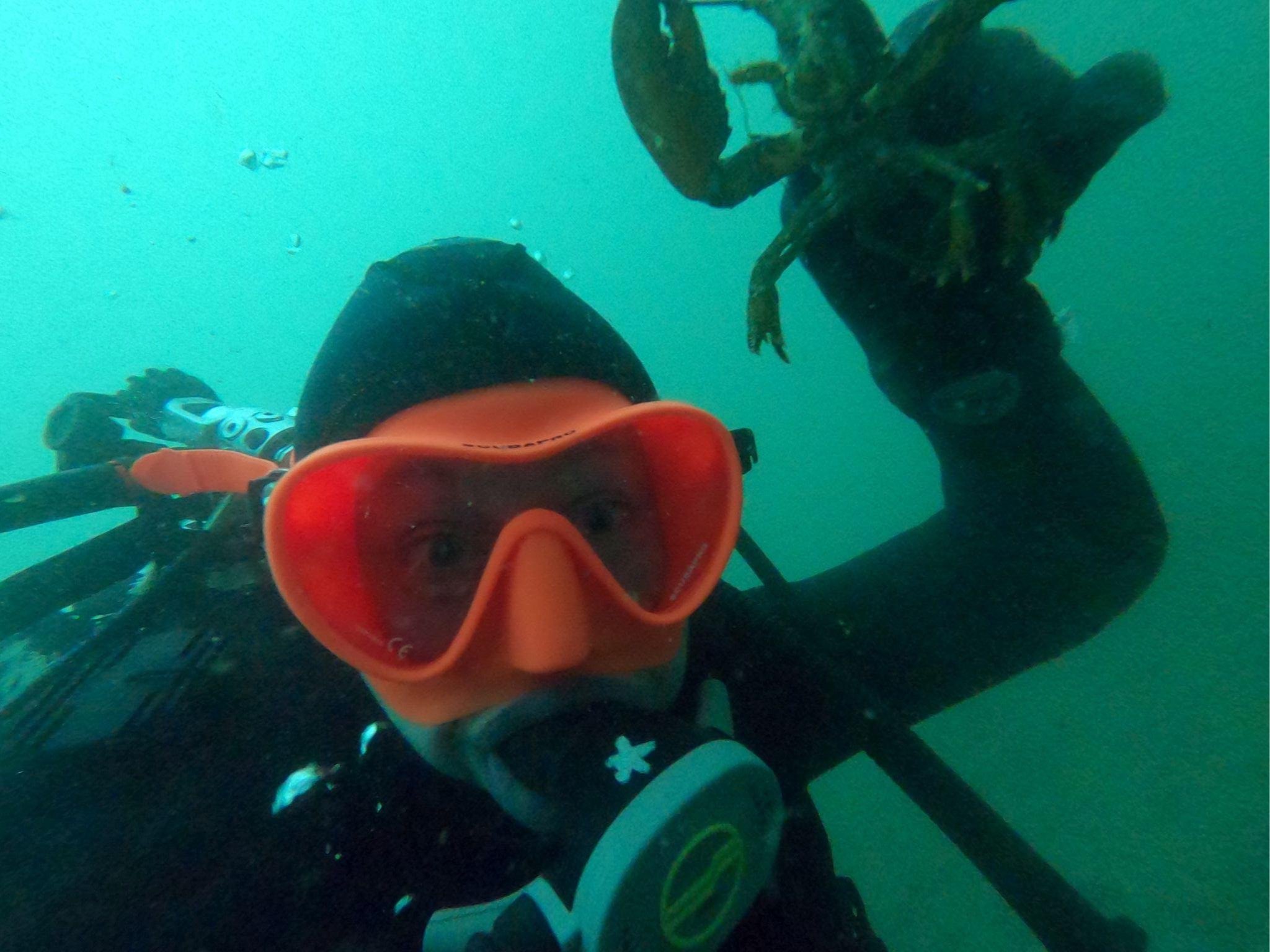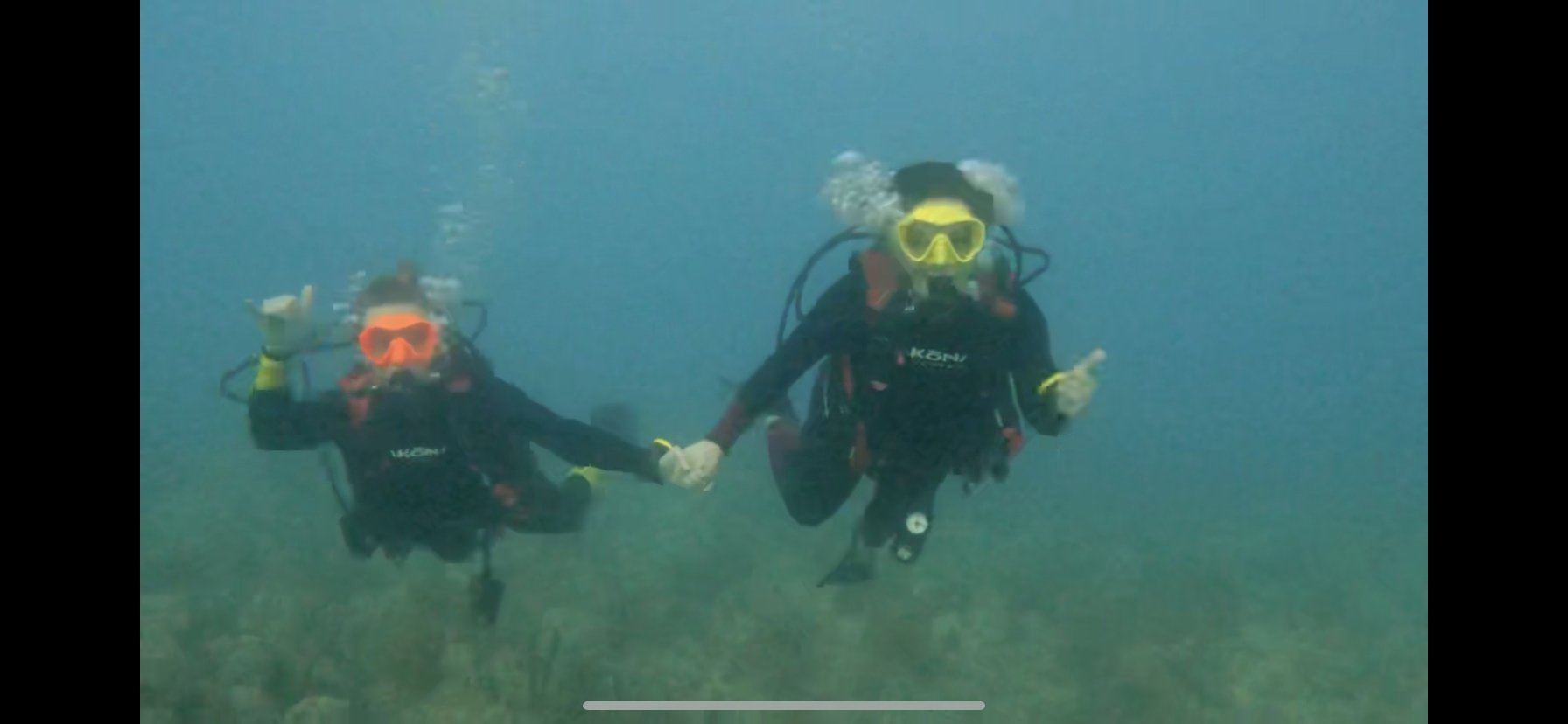The sun shimmers across the water, creating a beautiful, iridescent dance through the waves that lap at the boat on the dock. A few laughing gulls fly overhead, proclaiming their excitement for a sunny day of crab-hunting.
That’s what we all wish this past week would have been like! Here on the island there seems to have been a consistent fog, and an occasional mist here and there. As I sit here on my computer, entering data from our sea scallop spat bags, I hear fog horns blaring in the distance from the lobstermen going to do their routine trap checks, rain or shine.
On Monday of last week, I had a nice change of scenery- taking off on the Vinalhaven Ferry to Rockland the night before, and then off in the morning to the University of Maine’s Darling Marine Center in Walpole. It was a brief back-road drive to the center, and I passed through a few cute cities which I hadn’t visited yet. The weather was slightly gloomy, but the wildflowers clinging to one another in their roadside clusters warmed my heart a bit.
Once I arrived at the center, I joined interns from the AquEOUS program at the University of Maine, along with the rest of my Aquaculture Research Institute Externs for an awesome day learning about strategic and inclusive science communication. Throughout the day, we had a few sessions where we were led through engaging scenarios, which were facilitated by Sunshine Menezes and Katharine McDuffie from the Metcalf Institute. Later we were joined by two stellar panelists, Bill Trotter of Bangor Daily News and John Bear Mitchell of the University of Maine. They both discussed with us their perspectives of storytelling, and I came to realize how unique it was that even though they may work in different professions, their goals and audiences differ but can also overlap.
The three concepts that Sunshine and Katharine both emphasized to us to use in our science communication was intentionality, reciprocity, and reflexivity- and encouraged us to reflect on which we could better use on a daily basis, and which we felt were our strengths. One of my biggest takeaways from this workshop was that science communication happens for all of us- in lots of different ways. Especially as someone in a role that encompasses both educational and research aspects, it’s especially important that I’m able to explain my research in a way that makes sense to everyone.
Coming back to the island Tuesday afternoon, I fell right back into my favorite place like I had never left. Being on the mainland made me realize how much I craved the simplicity of my quaint cabin by the sea, where it almost always felt as though the waves rocked me to sleep every night, somehow, through the dirt. Upon my return, it was a computer day from what the weather said to me. I worked on my tunicate species ID sheet, which will be helpful for me during my research to ensure thorough data collection.
Throughout the rest of my week, I entered my first few columns of data into my tunicate-specific spat bag data sheet, enabling me to keep every number I could possibly need in one place. I’ve also been working on a fun blog post that’ll be coming sometime soon about the color variation on the shells of our baby scallops. It was an only natural question that popped into my mind after completing many-a-bag of spat, haha. I also spent a significant amount of time out on the aquaculture site, continuing with our deep clean and also grabbing some spat bags to bring back to the island for our education team.
Also…I’ve finalized my research question! I’ll be working to find differences in tunicate species richness in our spat bags from different areas in the bay, as well as different positions in the water column. Super exciting stuff! In my research so far, I’ve identified five tunicate species, three of which are invasive to northern waters. They compete with our native species for natural resources, and take up lots of space on the seafloor that is important to native settler species. Invasive tunicate species are of special concern for the Gulf of Maine as it slowly has been warming. These little guys are broadcast spawners- so the warmer the water, the more they’re inclined to reproduce (See sources one and two). I’m hoping that the results of my project will help the Hurricane Island community and greater Maine coast better understand tunicate populations and their impact on our native species.
Talk soon,
Olivia
(P.S., let me know in the comments if you have any questions about scallops, research on Hurricane, tunicates, or anything else!)
Sources:
So you want to know: The terrible trouble with tunicates – Maine lobstermen’s community alliance. (2013, February 7). https://mlcalliance.org/2013/02/07/so-you-want-to-know-the-terrible-trouble-with-tunicates/
NY Sea Grant | NYSG: Research News—Invasive species a worry for scallop fisheries. (2017, September 7) https://seagrant.sunysb.edu/articles/t/invasive-species-a-worry-for-scallop-fisheries-aquatic-invasive-species-research-news






